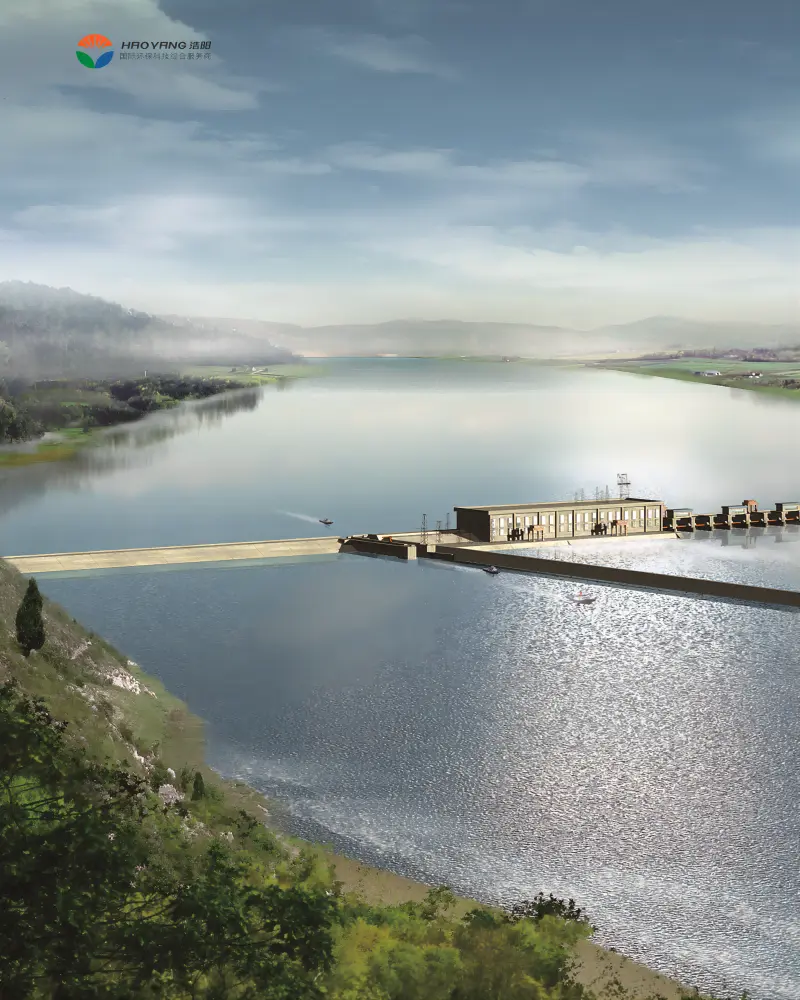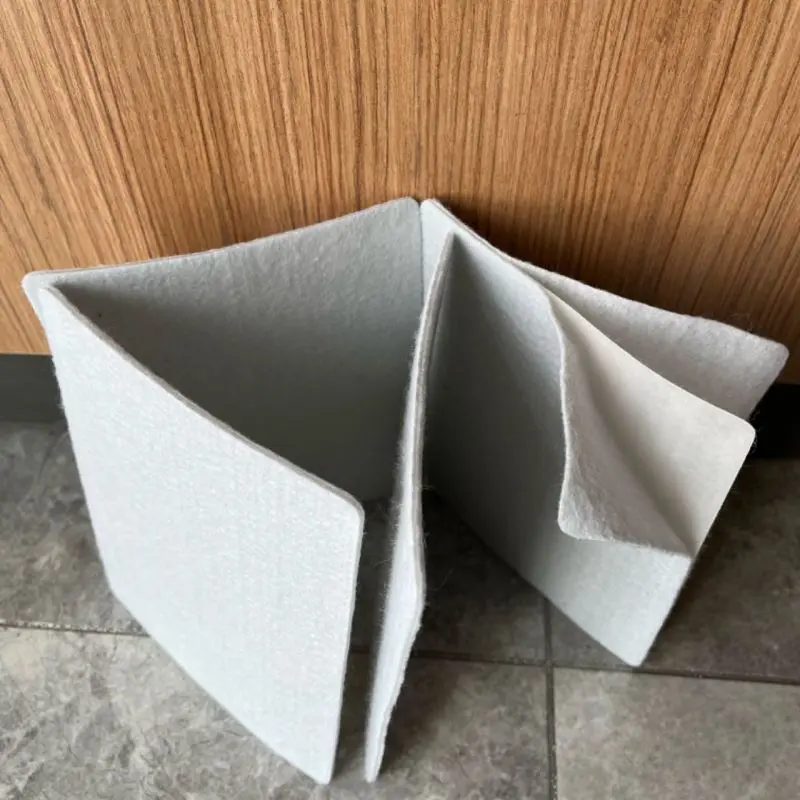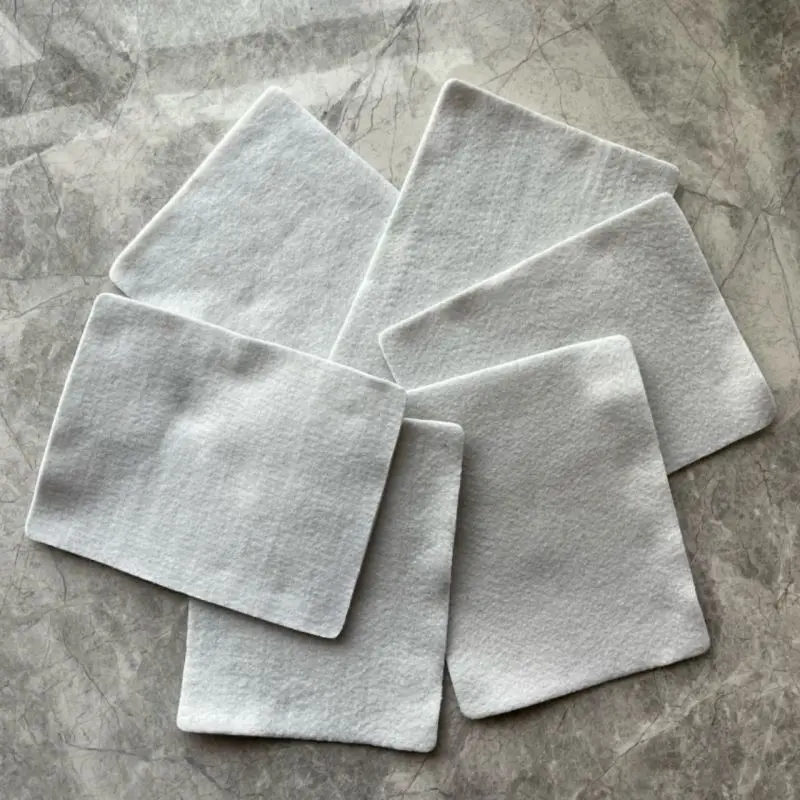Water Governance Project

"Water" is a crucial substance for the survival of humans and all living organisms, serving as an indispensable resource for human civilization development and environmental enhancement. It is a precious asset that cannot be replaced, playing a vital role in the proliferation and well-being of humanity. In the rapid advancement of global water resource conservation and hydraulic engineering, the use of composite geomembranes and staple nonwoven geofabrics plays a pivotal role.
Heilongjiang Sanjiang Governance Project
855252.webp)
Background:
The Heilongjiang Sanjiang Governance Project has a planned embankment total length of 2955 kilometers, divided into 23 construction sections, 10 supervision sections, and 10 detection sections. Among them, the newly constructed and reinforced embankments have a total length of 2537 kilometers. The project includes the planning of 644 drainage and diversion structures, with 278 newly built, demolished and reconstructed, and repaired structures. The Sanjiang Governance Project aims to protect a total area of 62.9 million acres, covering a population of 10.74 million. The estimated total investment for the project is 24.3 billion yuan, with a planned completion time of 3-5 years.
Our company has supplied products such as short-fiber needle-punched geotextiles for the reinforcement of embankments in this project. These materials serve as crucial components in enhancing the comprehensive disaster reduction capabilities for flood control and drainage in the basin.
Problems to be solved
1, Water Seepage and Contamination
2, Erosion Control and Soil Stability
3, Enhancing Infrastructure Durability
Our Solutions
883820.webp)
1, Preventing Water Seepage and Contamination:
Solution: Composite geomembranes act as impermeable barriers, preventing water seepage into the ground and the potential contamination of groundwater by hazardous substances. By using these materials in critical areas, the project can safeguard water quality and protect surrounding ecosystems.
2, Erosion Control and Soil Stability:
Solution: Staple nonwoven geofabrics provide effective erosion control and stabilize soil in areas prone to erosion. By reinforcing embankments and slopes with these geofabrics, the project can prevent soil loss, maintain stability, and reduce the risk of landslides or other geomorphic challenges.
3, Enhancing Infrastructure Durability:
Solution: The combination of composite geomembranes and staple nonwoven geofabrics helps enhance the durability of water infrastructure. These materials add strength and resilience to structures like embankments, contributing to their longevity and reducing the need for frequent maintenance. This, in turn, improves the overall sustainability of the water governance project.
Specific Products Selected
1, 200g/0.5mm/200g composite geomembrane

“Two-geofabric-one-geomembrane" is a type of composite geomembrane, which uses a PE (polyethylene) membrane as the impermeable base material, combined with nonwoven fabric to create a geotechnical impermeable material. Currently, the main geosynthetic membranes used for impermeability are made of polyethylene (PE), which is a flexible polymer material with a low density, high elongation, excellent adaptability to deformation, corrosion resistance, low-temperature resistance, and good freeze resistance. The nonwoven fabrics commonly used in combination include polyester short fiber needle-punched geotextiles, polyester filament spunbond geotextiles, and polypropylene short fiber geotextiles. When combined with a geosynthetic membrane, it not only increases the tensile strength and puncture resistance of the geosynthetic membrane but also enhances the friction coefficient of the contact surface, contributing to the stability of the composite geosynthetic membrane and protective layer. Moreover, they exhibit excellent resistance to erosion, with polyester short fiber geotextiles demonstrating resistance to strong acids and alkalis.
This project adopts our company's production of short-fiber composite geomembrane. In addition to its sealing and impermeable functions, it also serves roles in isolation, reinforcement, strengthening, and protection. It effectively prevents diseases in hydraulic embankments, reduces engineering costs, and well meets the high-quality, low-cost construction requirements of this project. It achieves a long-term stable impermeable and embankment protection effect.
2, 400g staple nonwoven needle punched geofabric

In the lower part of the dam embankment, 400g staple nonwoven needle punched geofabric is employed in the design to reinforce weak foundations, preventing erosion caused by flowing water. It enhances the stability of the dam body, prevents cracks, and protects the soil from freezing damage during low temperatures. This plays a crucial role in reducing construction costs, improving construction quality, and shortening the construction period.
This is a tipical case with the combination use of composite geomembrane and staple nonwoven geofabrics, which can:
1, Enhanced Seepage Prevention: The combined use of composite geomembranes and short-fiber needle-punched geotextiles significantly improves seepage prevention. While the composite geomembrane serves as an impermeable barrier, the short-fiber needle-punched geotextile further enhances soil stability, collectively preventing water infiltration and safeguarding infrastructure from liquid intrusion.
2, Soil Reinforcement and Erosion Resistance: The use of short-fiber needle-punched geotextiles in weak foundations reinforces the soil, prevents the occurrence of cracks, and enhances the overall stability of dam bodies. Simultaneously, this combination effectively resists water flow erosion, slowing down the erosion process and maintaining the integrity of the soil.
3, Cost Reduction and Construction Efficiency Improvement: The joint application of composite geomembranes and short-fiber needle-punched geotextiles contributes to lowering construction costs. By increasing the durability of infrastructure, extending its lifespan, and reducing maintenance and repair costs. Additionally, this combination accelerates the construction process, improving construction efficiency and allowing for a more cost-effective completion of the project.
FAQ
Q1: What is the role of composite geomembranes in a Water Governance Project?
Composite geomembranes serve as impermeable barriers, preventing water seepage and contamination, crucial for maintaining water quality and protecting surrounding ecosystems.
Q2: How do staple nonwoven geofabrics contribute to erosion control in water governance projects?
Staple nonwoven geofabrics provide effective erosion control, stabilizing soil in areas prone to erosion, and reducing the risk of soil loss and landslides.
Q3: Can composite geomembranes and staple nonwoven geofabrics be used together for added benefits?
Yes, combining composite geomembranes and staple nonwoven geofabrics not only increases the impermeability of structures but also enhances their durability, strength, and overall stability.
Q4: What types of geofabrics are commonly used in conjunction with composite geomembranes in water governance projects?
Geofabrics such as polyester short-fiber needle-punched geotextiles, polyester filament spunbond geotextiles, and polypropylene short-fiber geotextiles are commonly used in combination with composite geomembranes.
Q5: How do these materials contribute to cost-effectiveness in Water Governance Projects?
The use of composite geomembranes and staple nonwoven geofabrics contributes to cost-effectiveness by reducing construction costs, improving infrastructure durability, and minimizing the need for frequent maintenance and repairs.
186.webp)
897.webp)
942.webp)
237.webp)